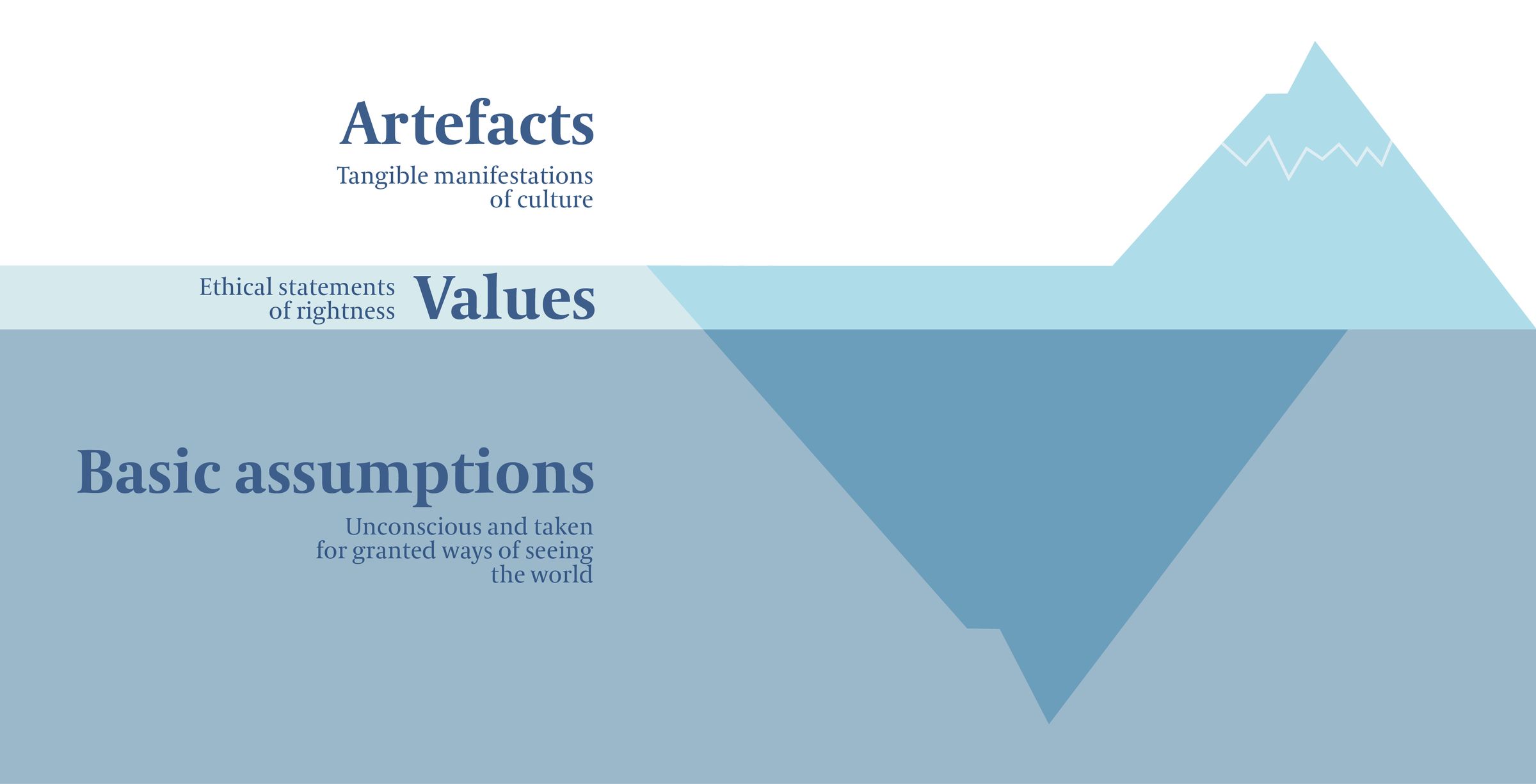How companies couple culture and strategy, given the external circumstances
Many gaming companies have recognized the importance of culture, not only for attracting and retaining top talents but also for accelerating and boosting their overall performance.1 In the process of defining and crafting their culture, however, many organizations painfully search for the optimal culture. Particularly data-driven, computation-intense industries like gaming implicitly nurture the notion that culture is yet another optimization problem with a computable, linear solution. Yet, culture considered in isolation is nothing but the most basic interpretation of “the way we do things around here”. The most successful industry players perfectly weed strategy and culture to the external environment. They have, in other words, a harmonious ensemble of:
Strategy
What is your game plan, given your vision and mission?
Culture
What values, norms, and beliefs – manifested in day-to-day behaviours - are needed for this strategy to come to life?
Context
What are dominating and directing external influences?
Few companies, however, make a genuine effort to meticulously define their envisioned culture, not to mention consider the holistic interplay of the three dimensions. Companies must work hard to flesh out their ambition along the three interrelated dimensions of defining whom to personify, what goals to pursue, and which external factors to consider. That is exceptionally challenging for an industry that – qua its scope and influence – actively shapes the external context. Particularly financially successful gaming companies that have enabled and shaped the recent industry surge are sometimes reluctant to revise and adjust their seemingly perfect ways of working, falling prey to the gravestone cliché “that’s how we’ve always done it”. Defining, evolving, and maintaining culture is a laborious, sometimes painful process, primarily when old, deep-rooted behaviors are abandoned and supplanted by new ones. Without an adequate conceptualization of culture, many executives are seduced to focus exclusively on familiar topics such as strategy and context.
1. E.g., Kotter (2012); Shahzad et al. (2012); Kotter & Heskett (2011); Homburg & Pflesser (2000)
The Cultural DNA
How eight cultural dimensions constitute the genesis of every organizational culture
Undeniably, accurately evaluating organizational culture is a massive, often underestimated challenge. Much of what defines culture is obscured, and the visible relics merely represent the figurative tip of the iceberg. Yet, culture, as theorized by Schein (2010), comprises everything from observable artifacts to existential beliefs and assumptions.

Working with a colorful bouquet of international organizations, we realized that the recurring behaviors in a work-related context are generally the best approximation of culture, implicitly reflecting people’s underlying assumptions. Following the groundbreaking work of Prof. Charles O’Reilly and his extensively validated Organizational Culture Profile, those observable behaviors can be conceptualized along eight dimensions:
Achieving
Achieving refers to a company’s ability to focus on goals and deliver results while ensuring high quality.
Thorough
Thorough describes the ability to be precise and pay attention to details. Businesses with a strong manifestation of thoroughness tend to deliver high-quality, end-to-end.
Customer Centric
Customer centricity represents a company’s focus on customers and its capacity to anticipate and recognize customer needs. It is often found in organizations that place a strong emphasis on listening to their clients.
Collaborative
Collaborative organizations work as a big unit with organization-wide cooperation and support. They deal constructively with conflicts, always seeking to preserve unity.
Employee-oriented
Corporations that are employee-oriented value interpersonal engagements. They encourage and spur respectful and fair interactions, thereby providing a safe space to enable personal growth.
Transparent
Transparency refers to the ease with which information flows within a firm. Transparent companies share information freely and have clear, open agendas.
Adaptable
Adaptable companies are characterized by a heightened willingness to change, frequently manifested in their extent of experimentation with new ideas. These companies tend to be more innovative and move quickly.
Principled
Integrity is probably the best word to summarize principled businesses. They foster a culture where people act with integrity and honesty.
In short, organizational culture arises from the interplay of the eight dimensions of O’Reilly’s Culture Profile. The variety and diversity of company cultures, in turn, emanates from the specific manifestation of each dimension relative to the others. And while all dimensions appear equally essential, companies must prioritize, accepting the inherent tradeoffs that accompany each decision. The advantageousness of any dimension, for instance, heavily depends on the larger culture – that is, the manifestation of the other seven dimensions. Adaptability, often seen as the holy grail of organizational design, especially in agile gaming companies, can prompt chaotic, unpredictable behaviors if not balanced appropriately. Ultimately, each company has its unique cultural signature, reflecting its core values and beliefs, its existential attitudes, and its formal and informal institutions.

Extended Seating Arrangement
How culture should have a permanent seat in executive boardrooms
Despite the enormity of this undertaking, companies can break free from the chains of their operational heritage. Just like strategy is a permanent guest in executive boards, culture, too, should have a regular seat at the table in executive boardrooms. Indeed, leaders that deliberately devote time and energy to the initially obscure and outwardly unstructured world of culture, can, with the right tools, create a lasting competitive advantage by neatly aligning strategy and culture to the external circumstances. Ultimately, under the artful leadership of their skilled executives, gaming companies can envision, implement, and hone their desired culture, setting off to new horizons.